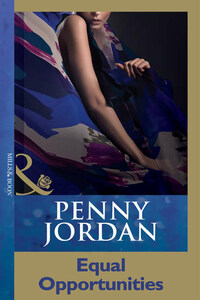Title Page
Introduction and Acknowledgements
Ever Since the Enlightenment
James Blish and the Mathematics of Knowledge
Dick’s Maledictory Web
Why They Left Zirn Unguarded: The Stories of Robert Sheckley
Nesvadba: In the Footsteps of the Admirable Čapek
Verne: The Extraordinary Voyage
Vonnegut: Guru Number Four
Barefoot: Its First Decade
The Gulf and the Forest: Contemporary SF in Britain
Looking Forward to 2001
The Hiroshima Man
From History to Timelessness
The Hashish Club
1951: Yesterday’s Festival of the Future
The Sower of the Systems: Some Paintings by G. F. Watts
The Fireby-Wireby Book
SF Art: Strangeness with Beauty
The Film Tarkovsky Made
Kissingers Have Long Ears
Spielberg: When the Mundane Breaks Down
Sleazo Inputs I Have Known
It Catechised from Outer Space: Politics in SF
The Flight into Tomorrow
Burroughs: Less Lucid than Lucian
‘Yes, well, but …’
The Universe as Coal-Scuttle
California, Where They Drink Buck Rogers
Modest Atmosphere with Monsters
Cultural Totems in the Soviet Union
A Swim in Sumatra
About the Author
Also part of The Brian Aldiss Collection
Copyright
About the Publisher
Did dinosaurs dream? Was there, in those tiny saurian brains, room for night-visions which related obliquely, flickeringly, to the daylight Mesozoic world? Looking at a triceratops skull, where the chamber designed for the brain forms a dungeon in a great Chillon of boney armament, I find it impossible to think that consciousness, however dim, would not have wanted the emergency exit of dreams from such confinement.
And later. Those scampering tarsiers who were our remote ancestors – they must have experienced dreams of such towering paranoid ambition as to wake them twitching in their treetop nests – or whatever sort of nocturnal arrangements tarsiers prefer – only to find themselves unable to cry, or even to know they were unable to cry, ‘Today a eucalyptus tree, tomorrow the world!’
Dreams must have preceded thought and intention. They are the argument with reason omitted. The essays in this volume concern themselves with dreams, or applied dreams, or reason; the applied dreams of art and science contain both elements.
In these idle things, dreams, the unity of everything is an underlying assumption. Scientists have always needed artists to broaden their imaginations; artists have needed scientists to sharpen theirs. When William Blake wrote, ‘To see a world in a grain of sand …’, he was not referring only to a visionary experience, as is customarily supposed when the lines are quoted; but also to the strictly practical business of looking through the microscopes of Robert Hooke and Antony van Leeuwenhoek.
However important dreams may be, they are far from being our whole story. For the human species, reason must take precedence, for reason is a human monopoly. Animals have reasoning ability; we have reason. Twelve million years ago the great physical world, this world, was different in no important way from the world of today. But the living world was greatly different: there was no reason, no pair of eyes to take a cool look at what was going on over the left shoulder or after the next meal. There were no human beings. Only tarsier dreams.
This prosaic reflection has been acceptable coinage for only two hundred years, if that. The great divide in the history of thought under which we all live, even the least philosophical of us, is brought about by the theory of evolution: that theory heard as a mutter in the seventeenth century, rising to a prolonged murmur in the eighteenth, and finally becoming articulate last century. Evolution has sharpened our ideas of time; the world of living things, previously frozen into immobility like a stop-action movie shot, has burst into action in our understanding, filling us with fresh understandings of change.
Darwin, Wallace, and the many men of vision whose work went towards formulating evolutionary theory – not least Captain Fitzroy of the Beagle who remained a lifelong opponent of Darwin’s ideas – altered our way of viewing both the world and ourselves. Possibly it is just a coincidence that during the eighteen fifties, when The Origin of Species was published, photography was all the rage. In particular, the stereoscope, without which no good Victorian family was complete, was familiarising people with ancient civilisations and the beauties of other countries and times. A new way of seeing was in the air.
Photography combines art and science in an ideal way. It is now so much a part of our lives that we hardly notice its all-pervasive nature. Yet it has not persuaded us to regard art and science as the complex unity I believe they are.














